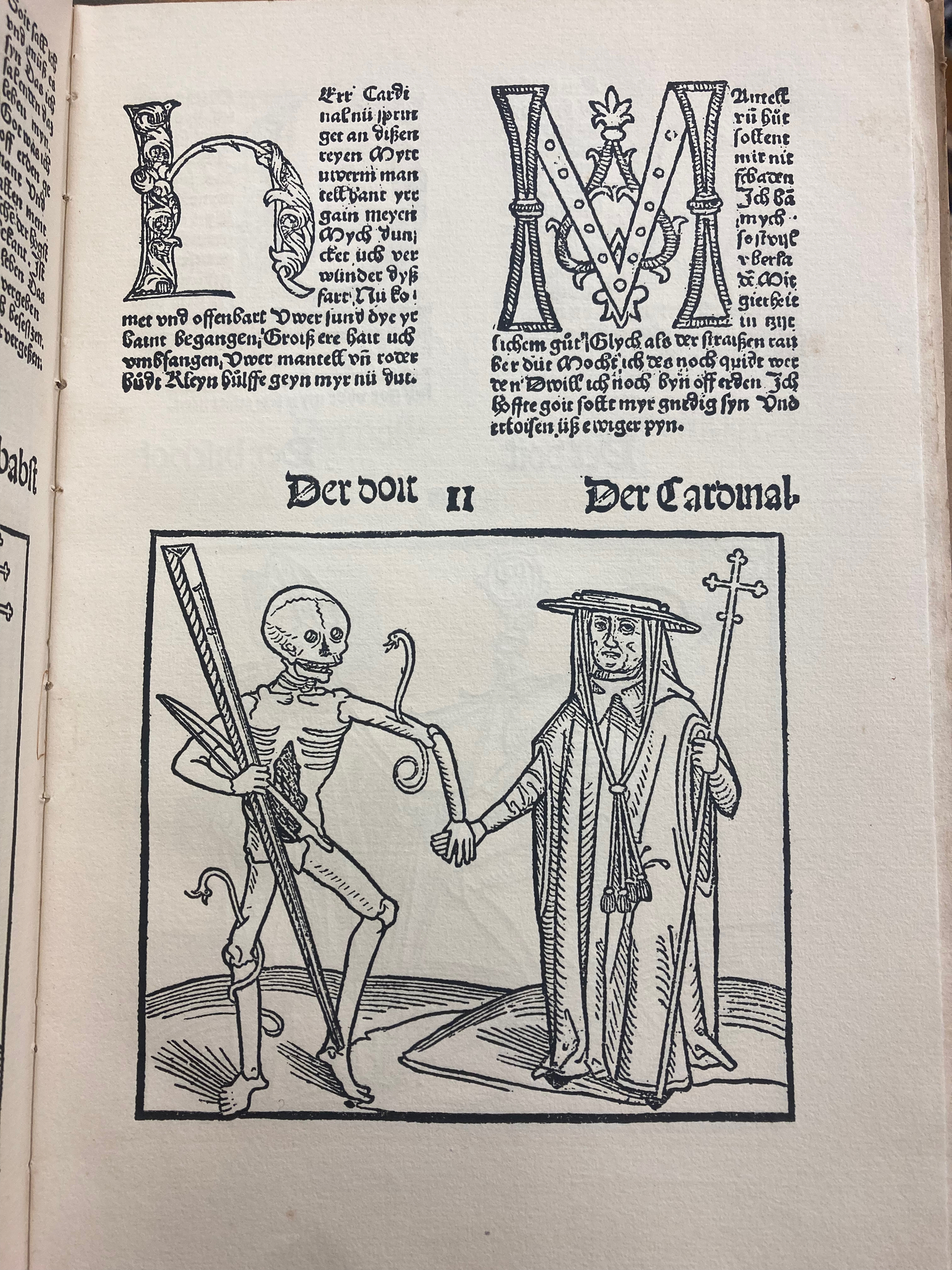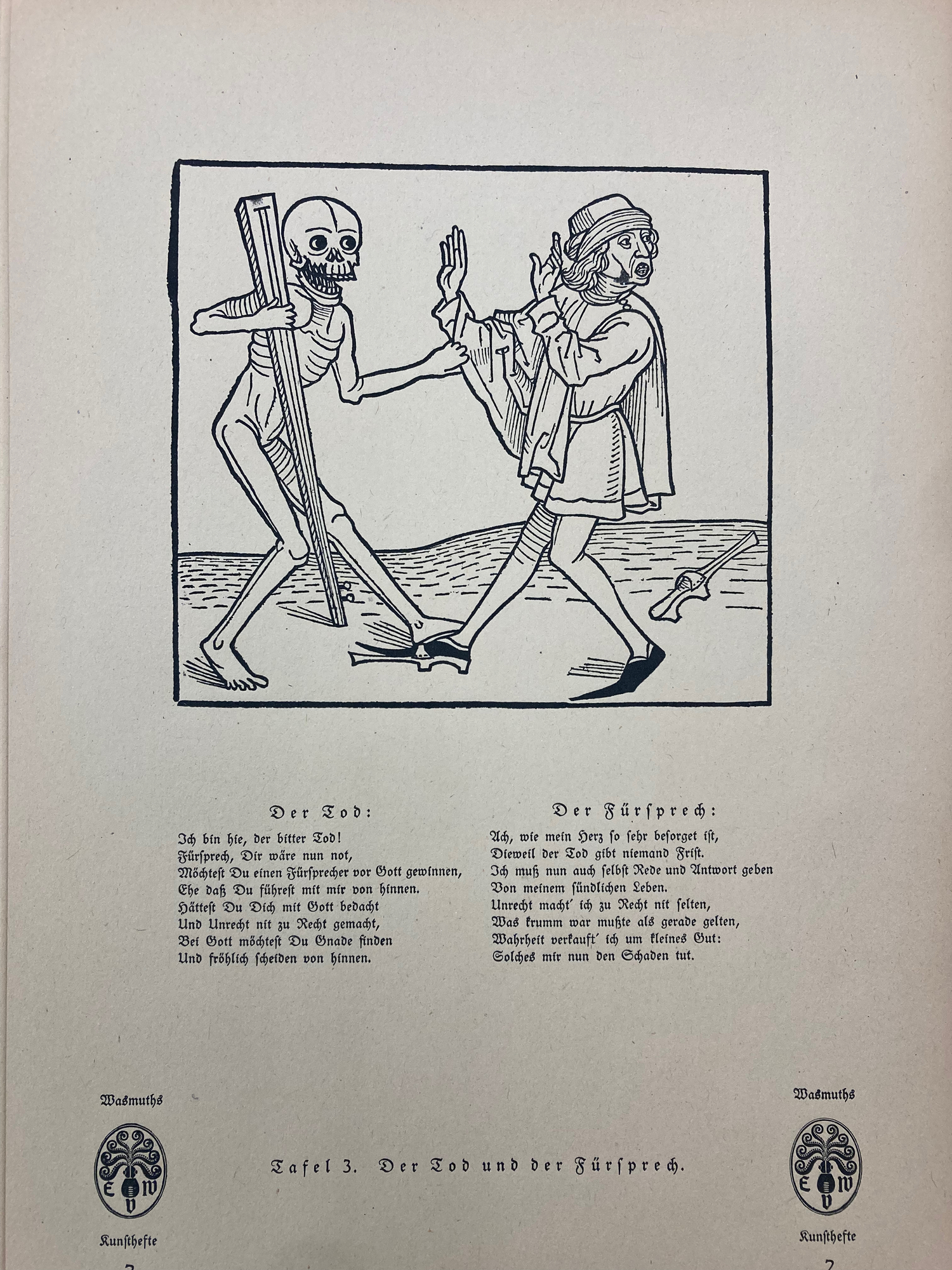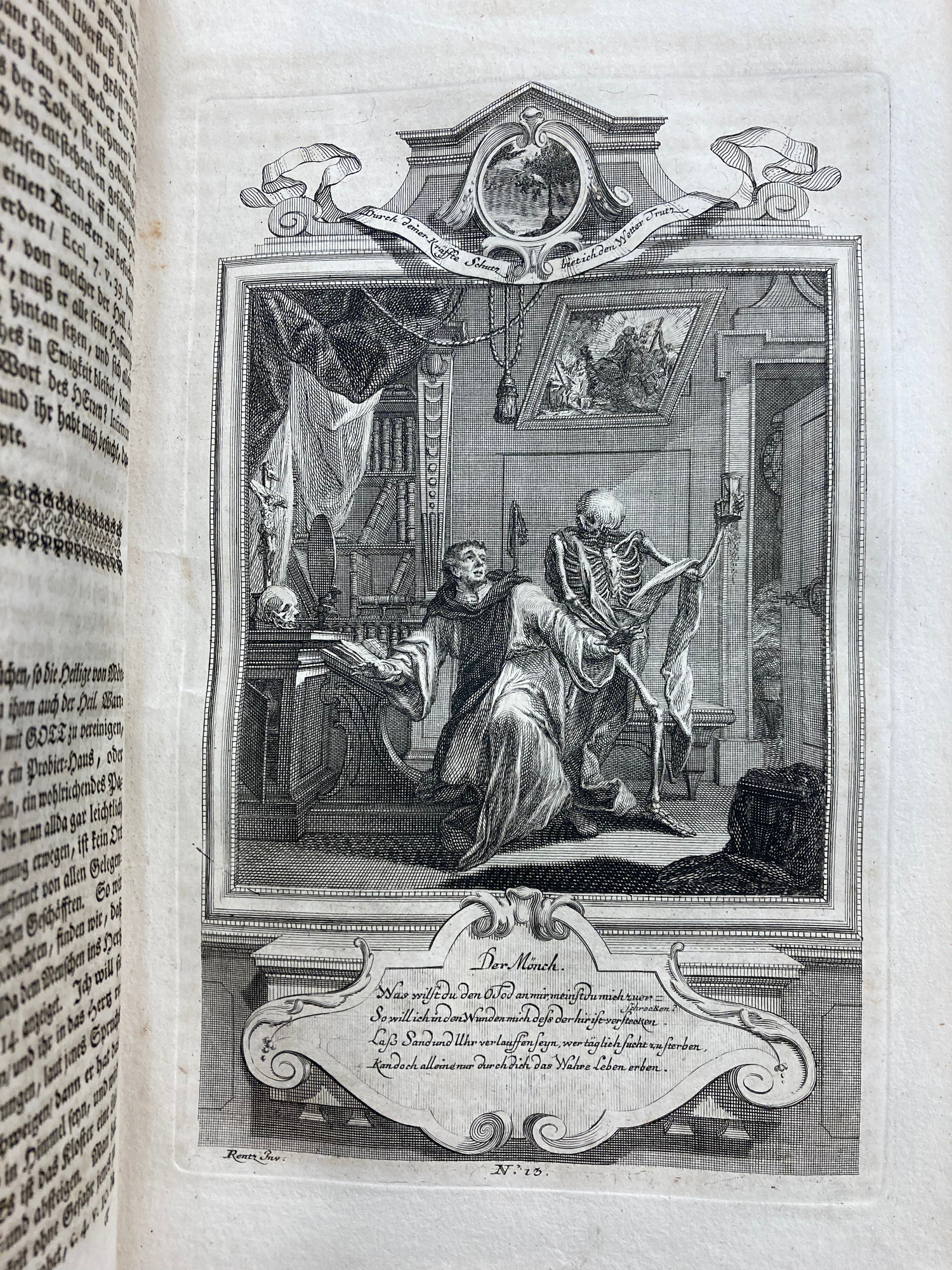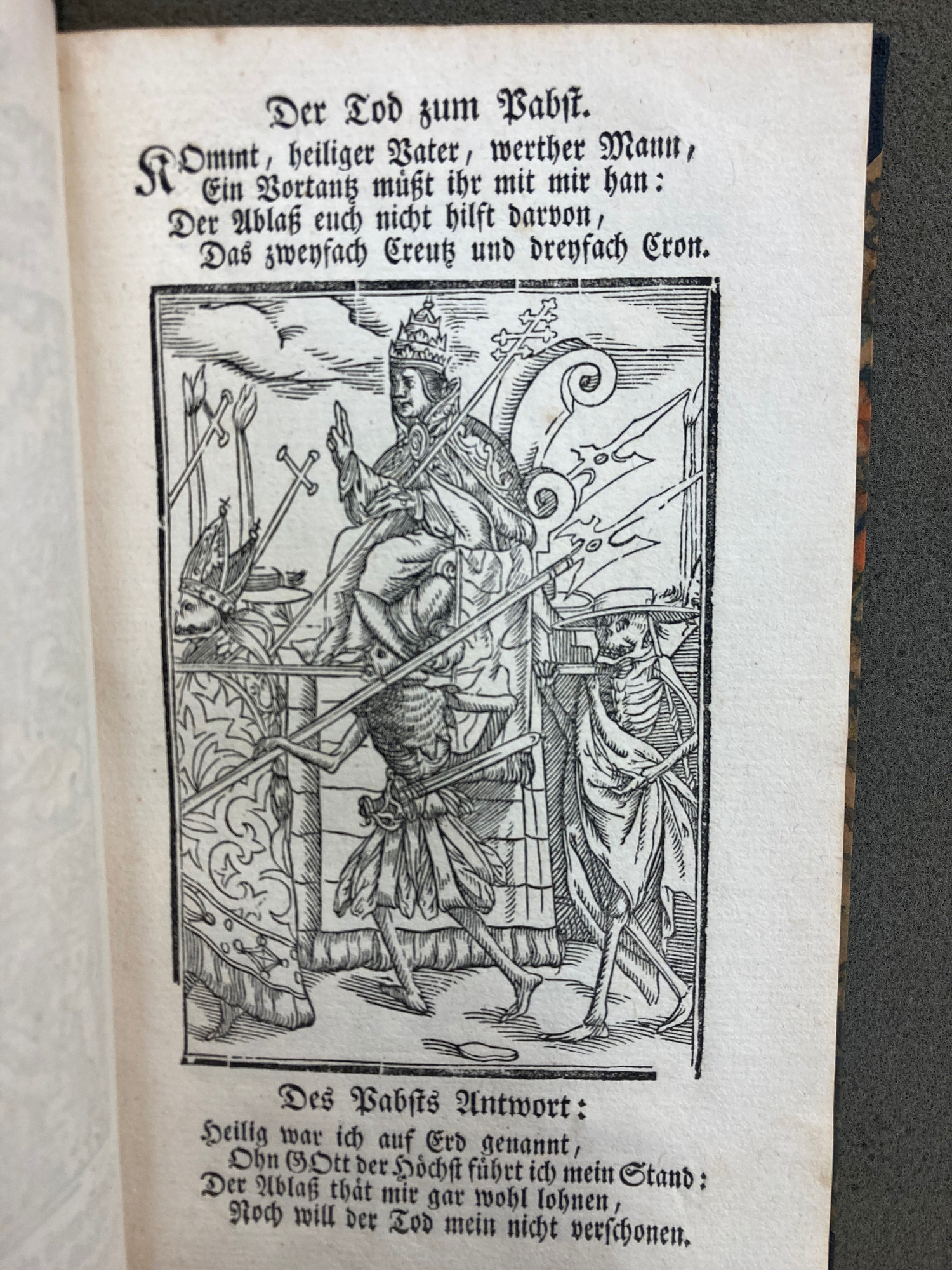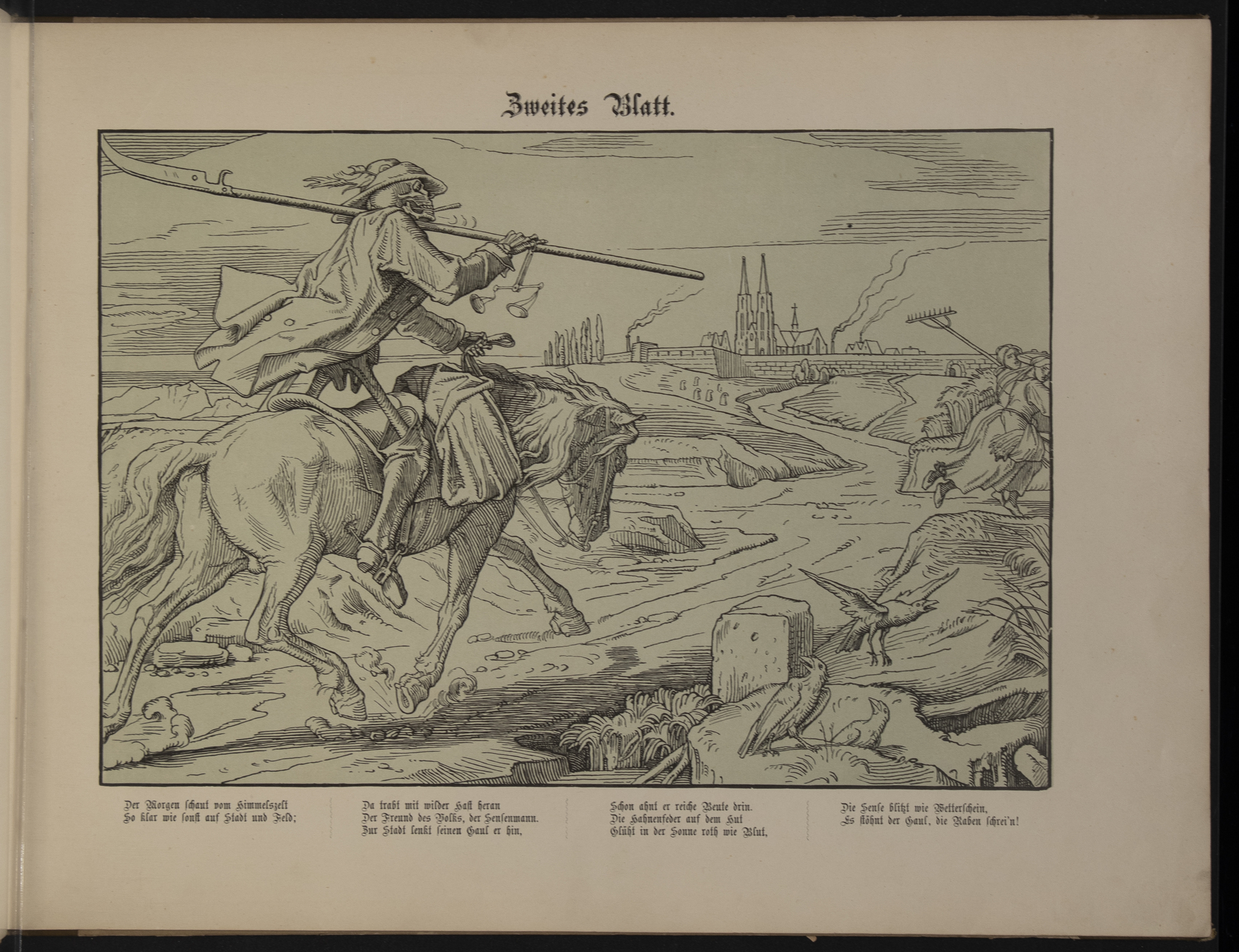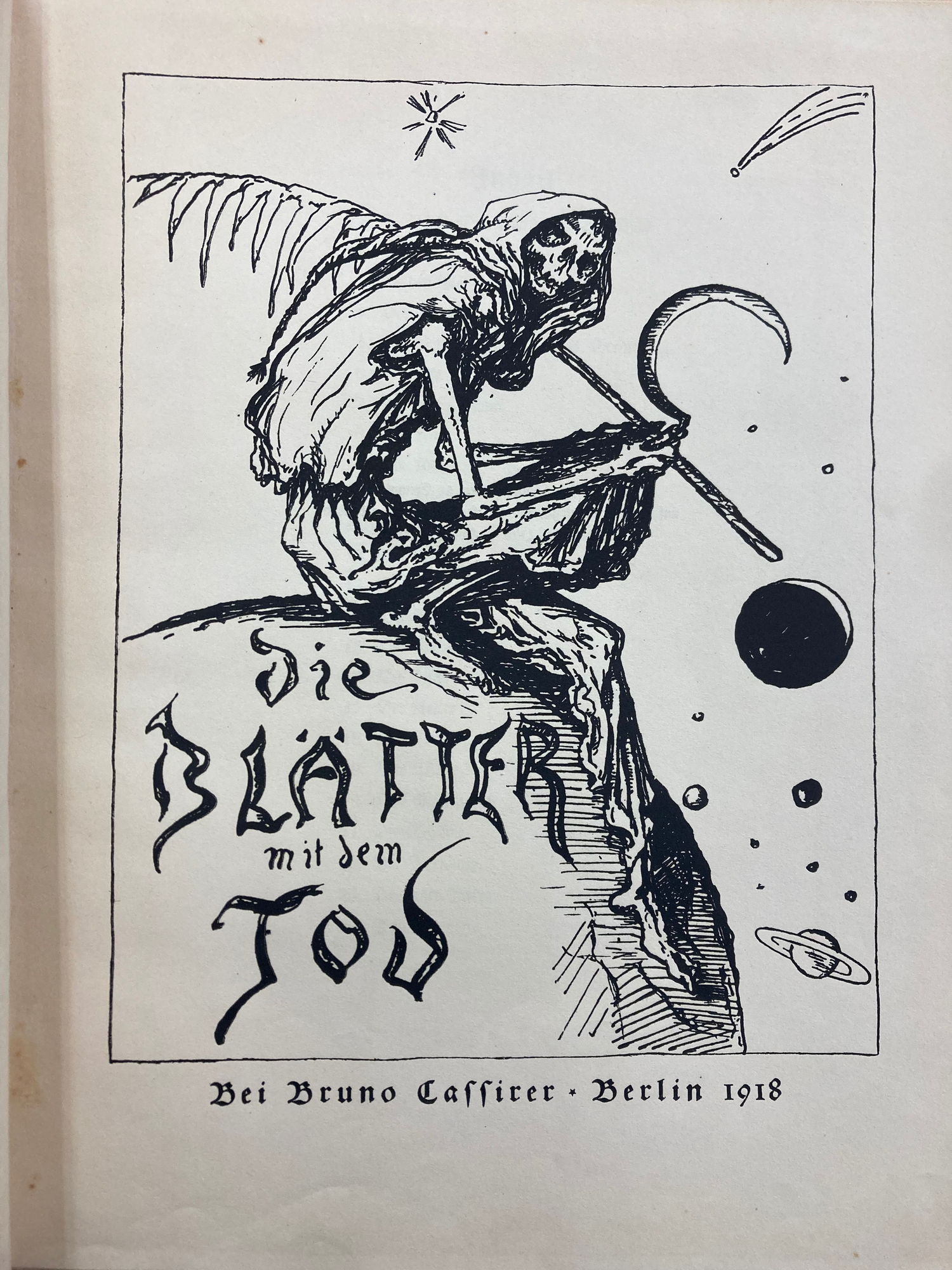No Bones About It: An exhibit of spooky skeletons
Bücher über Knochen
Some of the most famous dances of the dead were in German-speaking regions. The German-language books in this exhibit cover a wide range of styles as different artists engage with the tradition. We have facsimiles of two medieval printed books, an 18th-century moralizing tract, an 18th-century recreation of the famous paintings in Basel, and two books inspired by older dances of the dead, whether to articulate political views or as a topic for Expressionist sketching.
Der doten dantz: mit figuren, clage vnd antwort schon von allen staten der werlt.
N7720 .H5 S3 1485A
This is a 1922 facsimile of a 1485 book, possibly printed in Heidelberg or in Ulm, and the first printed edition of the southern German Dance of the Dead. Note how here the Dance of Death features rotting corpses rather than skeletons: this is much more common in older representations. A possible reason for this may be that earlier artists had a less clear understanding of human anatomy, in part because human dissection was very rare.
Ein altdeutscher Totentanz.
Helmuth Theodor Bossert (1889-1961), text
N7720 .H5 B6
This book is a facsimile of a much older book, an incunable that Bossert thinks was printed in Heidelberg in the late 1400s. Note again the fleshy Death and the worms or snakes that are wrapped around his limbs and protruding from his body.
Geistliche Todts-gedancken bey allerhand Gemählden und Schildereyen: in Vorbildung unter-schiedlichen Geschlechts, Alters, Standes, und Würdens-persohnen sich des Todes zu erinneren, aus dessen Lehr die Tugend zu üben, und die Sünd zu meyden.
Michael Heinrich Rentz (1701-1758), engraver
N7720 .R57
The traditional order of the Dance of the Dead is by social class, starting at the top of society and moving down. This book is a good example of that, notably putting the Pope and the Cardinal at the start and then works its way down the social order.
Der Todten-Tantz: wie derselbe in der weitberühmten Stadt Basel, als ein Spiegel menschlicher Beschaffenheit, ganz künstlich mit lebendigen Farben gemahlet, nicht ohne nützliche Verwunderung zu sehen ist.
N7720 .S37 1842
Another recreation of the Basel Dance of the Dead, the book is full of woodcuts depicting the artwork painted on the walls there. The title notes that the originals were colored brightly.
Auch ein Todtentanz.
Alfred Rethel (1816-1859), engraver
Robert Reinick (1805-1852), text
N7720 .R5 1890
Alfred Rethel was a 19th-century German artist who was particularly noted for his depictions of historical scenes. This particular set of works, depicting Death as part of the revolutionary movement, was received with great acclaim in politically conservative circles. (Our copy is the twelfth printing, an impressive feat.) Based on his writings and those of his friends, Rethel himself appears to have been more progressive politically, albeit an opponent of revolutionary excess.
Die Blätter mit dem Tod.
Alfred Kubin (1877-1959)
NC1145 .K814
An Austrian artist known for his interest in Symbolism and Expressionism, Alfred Kubin was associated with the Blaue Reiter group around Wassili Kandinsky and Franc Marc. His depiction of the Dance of Death is detailed but stylized. Kubin includes himself in two of the plates: plate number 10 “Der Zeichner” (the artist) and on the final one, where he includes his name on one of the gravestones.
